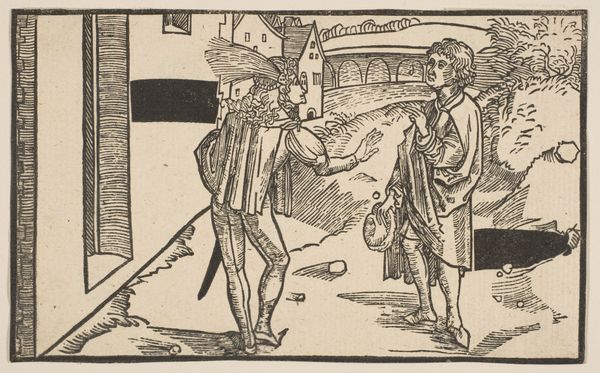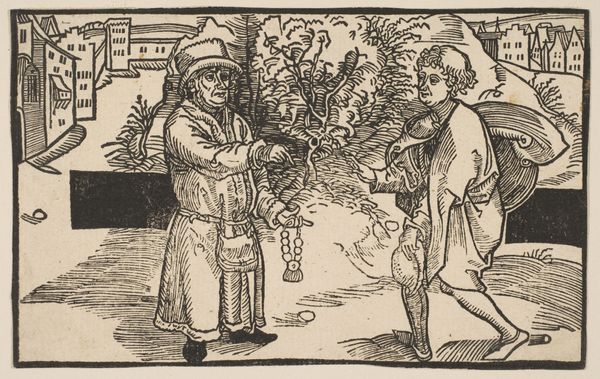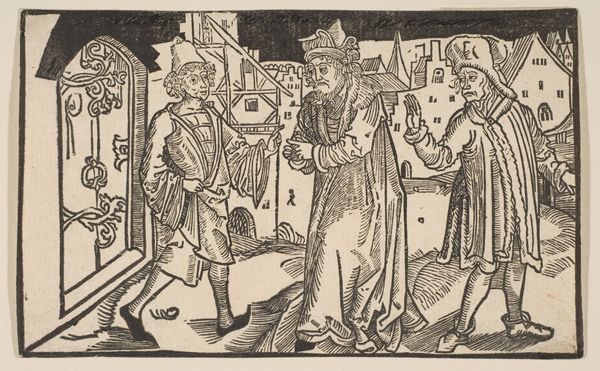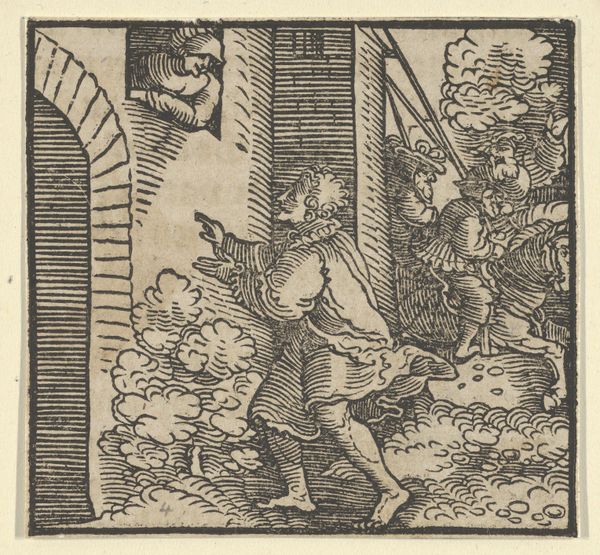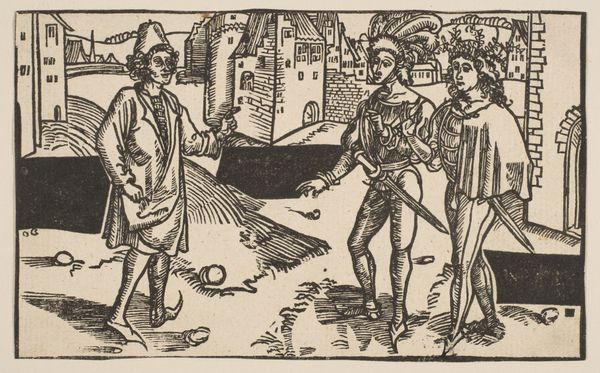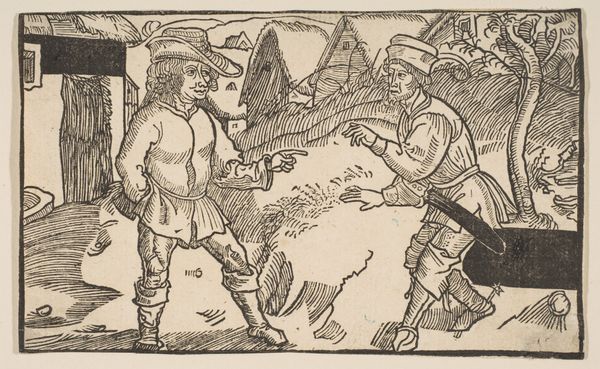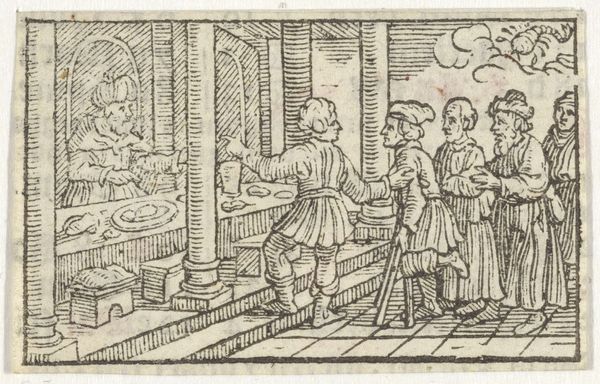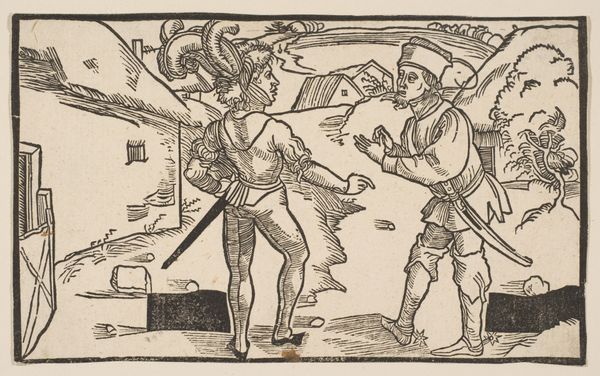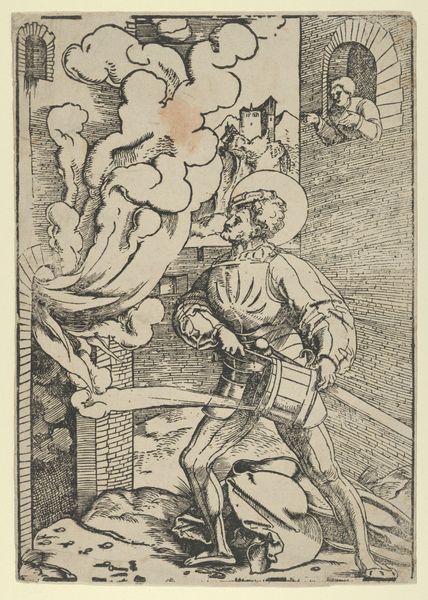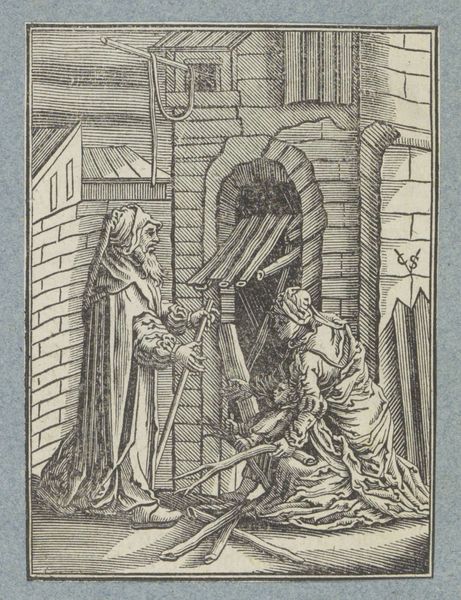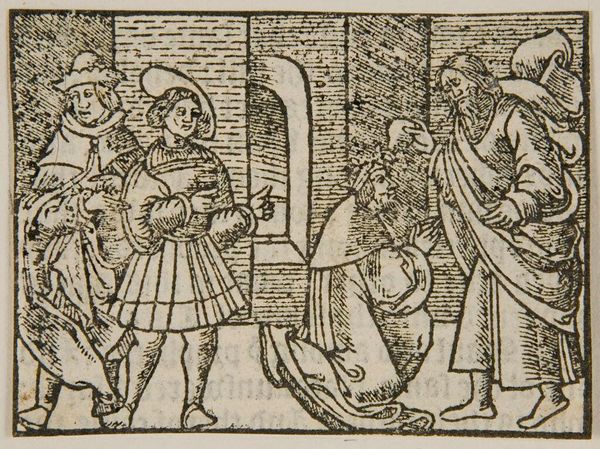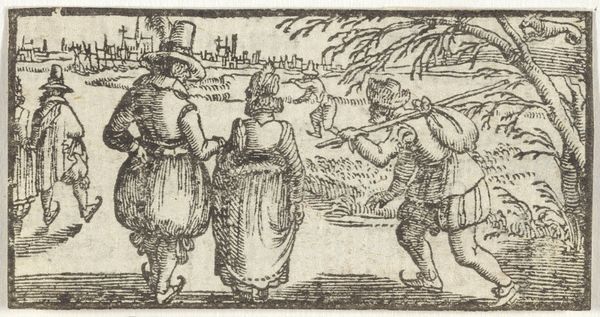
Adelphi, from The Comedie of Terence, 19th century reprint 1485 - 1528
0:00
0:00
drawing, print, woodcut
#
drawing
#
medieval
#
narrative-art
# print
#
figuration
#
woodcut
#
men
#
genre-painting
#
northern-renaissance
#
building
Dimensions: sheet: 3 1/2 x 5 5/8 in. (8.9 x 14.3 cm)
Copyright: Public Domain
Editor: This woodcut, titled *Adelphi, from The Comedie of Terence*, attributed to Albrecht Dürer, feels like a stage frozen in time. The figures, particularly their clothing and expressions, hint at a story. How does this image fit into its historical moment? Curator: Well, its socio-historical roots are fascinating. The reprint dates much later, from the 19th century, but the image originates in the late 15th to early 16th century, during a period of intense social change marked by the rise of humanist thought and the burgeoning printing press. Images like these weren’t just aesthetic objects. Editor: What was their function, then? Curator: Prints like these became essential for disseminating classical literature and ideas to a wider audience. Theatre, particularly the comedies of Terence, was being rediscovered. Notice the stark contrast of the woodcut medium. It allowed for mass production. Its very nature democratizes art, bringing scenes of classical comedies to homes and libraries. Who has access, and what do they see when they view an artwork are the central concerns for any good historian. Editor: That makes me think about who *couldn’t* see them back then, as well as today given their location. So this image wasn't just about aesthetics, but access and social influence? Curator: Precisely! This print acted as a cultural carrier. It played a role in shaping the public's understanding of classical drama and its relevance to contemporary society. The museum exhibiting these works frames our understanding further. Consider this an intersection of politics, art, and the very act of interpretation. Editor: That gives me a whole new way of thinking about woodcuts – seeing them as vital historical documents, not just artworks. Curator: Indeed. Recognizing art’s broader social role enriches our appreciation and sparks essential questions about cultural preservation and representation.
Comments
No comments
Be the first to comment and join the conversation on the ultimate creative platform.
